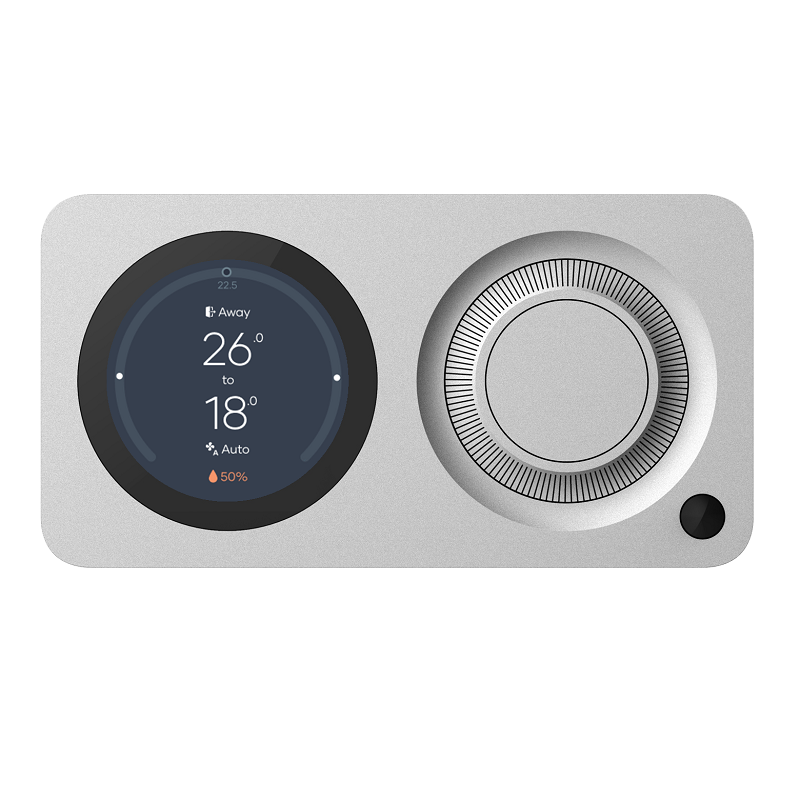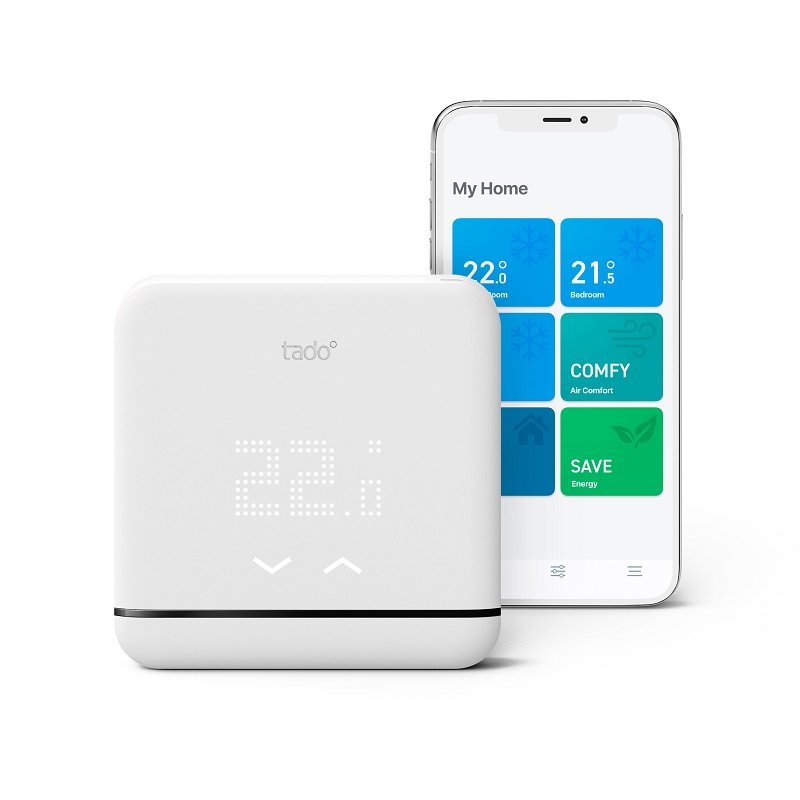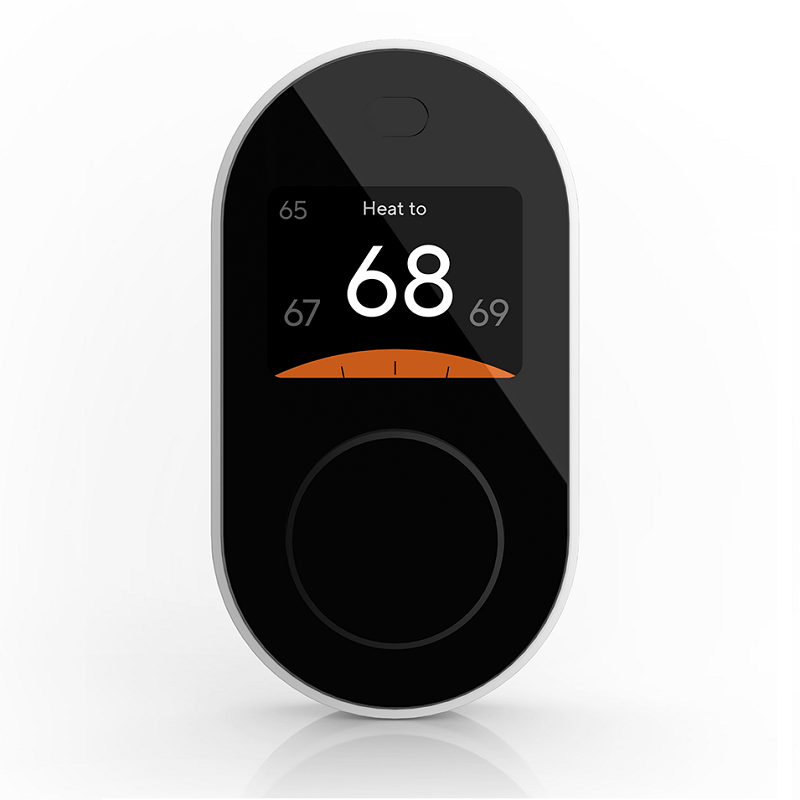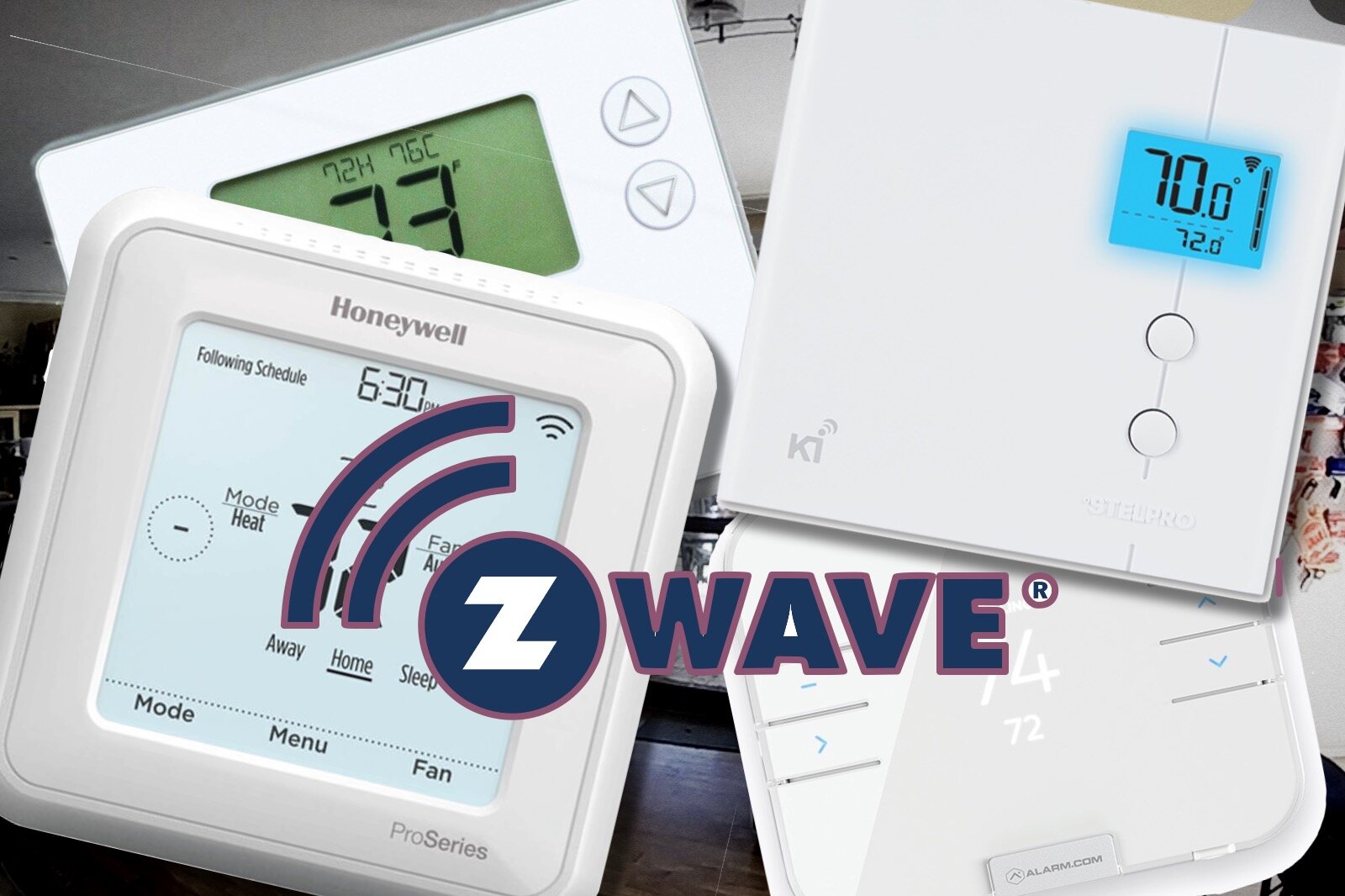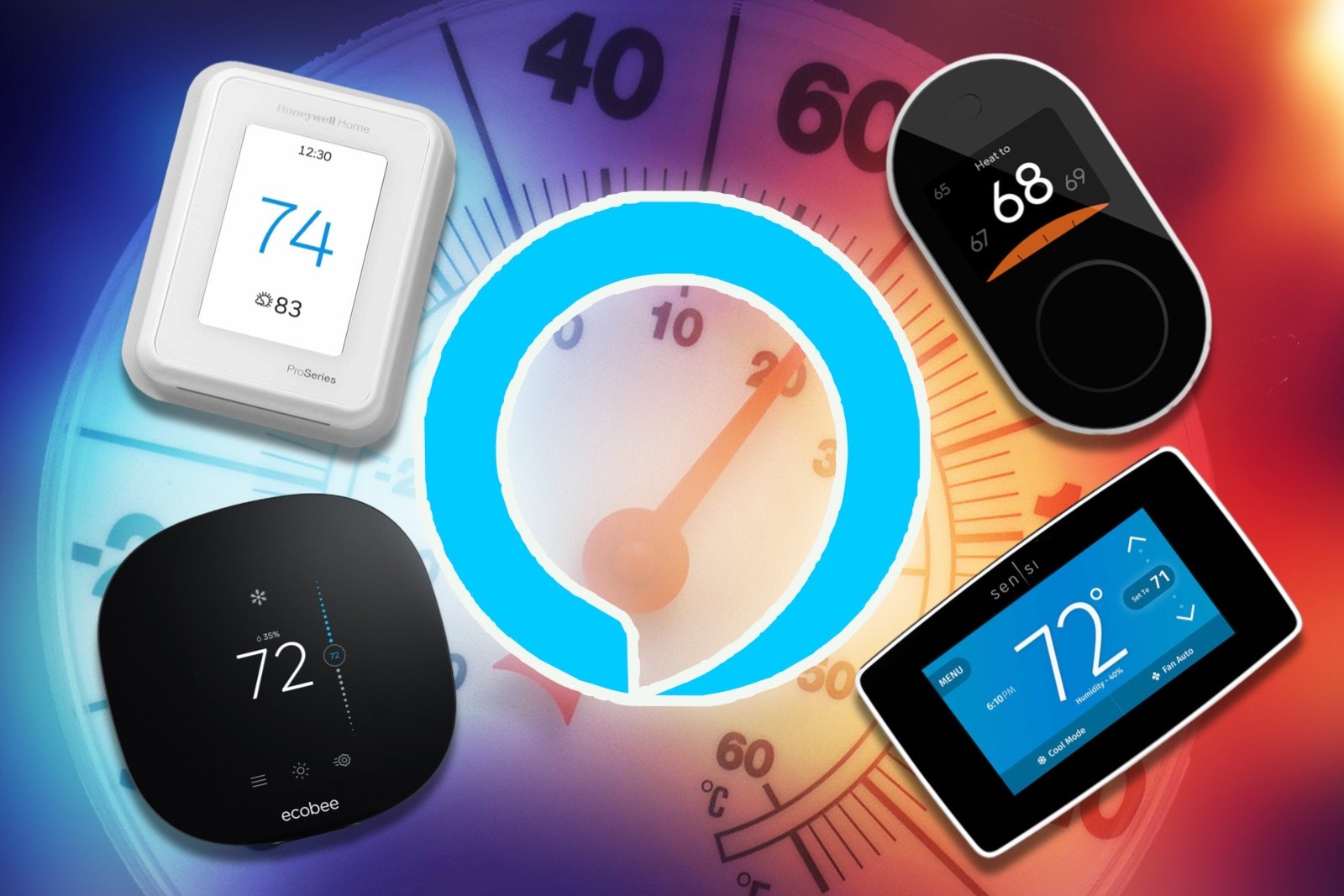Smart Thermostats in Australia: 2024 Buyer's Guide
When you buy through links in this article, I may earn an affiliate commission. Learn More.
Most smart thermostats are designed for the United States market where there is a fairly standard 24v wiring arrangement and the heating and AC systems are actually quite dumb. All control and logic functionality is performed solely by the thermostat, and the HVAC system simply accepts on/off signals for its various functions through these wires. While there are certainly some minor variations in that wiring, for the most part you’ll find common wiring labels that can be easily matched to your thermostat.
Quick Links
In Australia the situation is much more complex. You might get lucky and find your ducted air conditioning or heating system uses similar wire labeling, such as some models from Brivis. In these cases, and with the help of the system’s manual, you can probably match up the right wires and be on your way. Unfortunately, the more common ducted AC systems use completely different wiring - and even communication systems.
I’ve been looking through the wiring diagrams for many common brands of ducted systems in Australia and it’s clear that there would normally be no way to connect these to a commonly available smart thermostat. A lot of these systems use Modbus for communication, which requires more complex control circuitry on the other end than the simple on/off wire signal wires used by 24V systems.
Thankfully all is not lost as there is a home-grown model that is just as good as the US thermostats and supports a wide variety of the major AC brands we see in Australia.
Best Overall
Milieu Climate
★★★★★
✔ Supports Alexa, Google Assistant
✔ Wi-Fi and Thread radios
✔ Two mounting bases and battery
✔ 7 environmental sensors
✔ Machined aluminium body
✔ 2-year warranty
✔ Range of brand adapter kits
✘ More expensive
What I Like
The Milieu Climate Smart Thermostat is a home grown product designed in Sydney that, while expensive, offers an unparalleled flexibility in installation options and compatibility with the widest range of Australian ducted AC systems I’ve been able to find. It can take a bit to get your head around how it’s installed, but key to this is understanding that the control unit (they call it the hub) is wireless and can be powered from either the base plate, a USB C charger, or run for up to 30 minutes on it’s internal battery.
It actually comes with two base plates, one that houses the control logic and connects to the actual thermostat wires (the smart base), and the other which provides power only (the power base). This means you can install the smart base where your existing wires come out, but install the power base somewhere more convenient. You may actually need to do this to get the best results from the hub’s extra sensors as the original placement of your thermostat didn’t account for these. You can snap the hub onto either base as desired though.
In addition to the usual temperature and humidity sensors you’d expect in a thermostat, the milieu comes with Air Quality, Pressure, Lighting, Sound, Motion, and an accelerometer that allows it to rotate the display if you choose to mount it vertically, because you can.
Besides integrating with Amazon or Google Assistant, the app is slick and offers a simple interface for manual control, environmental monitoring, and setting a 7 day schedule with multiple changes per day. The unit also supports Auto adjust and Away modes, Dry mode, various fan options, and a 24 hour timer function, all easily set from the bright color display.
If you’re fortunate to have a standard 24v system you have wire terminals supporting 2-stage heat and cool, fan, and accessory control. If not, then you can take advantage of the wide array of adapter kits on offer. These add support for the proprietary wiring of common brands of AC including Toshiba, Daikin, Mitsubishi, Fujitsu and many others. It’s this wide compatibility support, high build quality, and flexible design that has made this my top pick.
Potential Concerns
My only real call out with this product right now is the price. It’s is a LOT more expensive than you’d be looking at for an ecobee or even a Wyze smart thermostat, but if you can’t use one of those, then this is a great option if you can afford it.
Best for Split Systems
Tado Smart AC Control V3+
★★★★✩
✔ Supports Alexa, Google Assistant, HomeKit, IFTTT
✔ Wi-Fi, no hub
✔ On screen touch controls
✔ Wall mount or stand
✔ Works with most IR-based AC systems
✘ Requires subscription for smart features
✘ Manual controls are basic
What I Like
While there are various air conditioner controllers that work with infra-red remotes, the Tado Smart AC Control is the one that operates most like a smart thermostat for a ducted system. It aims to fully automate your AC operation and keep things as hands off as possible, while still providing manual control via the app, all three major voice assistants, or even via capacitive controls on the stylishly minimalist face of the unit.
If you want that smart thermostat experience then Tado can deliver, but it’s important to understand that this is the way it’s intended to be used. There has been a degree of negative feedback because the manual controls are not as comprehensive as some other products, but if you set it up correctly you shouldn’t need them under most circumstances.
By using the multi-user geofencing features, which I’ve found work extremely well compared to some products, combined with a smart schedule and the open window detection logic, you can completely automate your AC year-round. This can lower your energy consumption and reduce your electricity bills, and you get a nice usage report at the end of each month.
The Smart AC Control can be easily wall mounted using the provided back plate, or you can get an option stand and place it on a desk, shelf, or table. Just be sure to keep it out of the direct air flow from the AC to prevent invalid temperature readings.
Potential Concerns
Tado uses cloud-based control to facilitate connection to the smart phone app wherever you are. This is pretty common for app based smart devices, but if there is an interruption due to internet issues or server problem on their end, your thermostat will stop working. I haven’t found this to be common after several years of use, but it’s frustrating that it can’t continue to run its schedule independently.
The other big downside is the need for a subscription to use most of the smart features. While you can still use the manual controls without it, those are pretty limited, and you really lose the benefits of the automation capabilities that you’re paying for. The sub for all of the features will cost you $5 a month.
Best for Floor Heating
Meross Smart Thermostat
★★★★✩
✔ Supports Alexa, Google Assistant, HomeKit
✔ Wi-Fi, no hub
✔ On screen touch controls
✔ Dual sensor system
✔ Tempered glass display
✘ Cloud Controlled
✘ Manual controls are basic
✘ Doesn’t support boilers
What I Like
For Electric floor heaters the Meross Smart Thermostat works out of the box with Australian mains voltage systems up to 16 Amps. It features a tempered glass touch display with all of your common controls, and remote access via the Meross app which also provides integration with Alexa and Google Assistant. HomeKit is natively supported and can be paired without using the Meross app.
You can set up multiple thermostats for multi-room control from a single app, with scheduling available in six separate time blocks per day. There’s also a nice open window detection feature that will pause heating for 30 minutes if it notices a sudden temperature drop which helps to save energy.
Being a line voltage thermostat, the wiring is fairly simple, but working with mains voltage means you’ll need an electrician to install it.
Potential Concerns
You may have issues using a cloud-controlled thermostat, but this is fairly common with anything that integrates with Alexa or Google. The big win here is native support for HomeKit which provides completely local control and mandatory encryption.
This model only supports electric underfloor heating system, not water or boiler systems. There are separate boiler and radiator models in the same range, though.
Best C-Wire Smart Option
ecobee Smart Thermostat
★★★★★
✔ Supports Alexa, Google Assistant, HomeKit, SmartThings, IFTTT
✔ Dual band Wi-Fi - ho hub
✔ 24V C-wire or included adapter
✔ Includes detached smart sensor
✔ Alexa built in voice control
✔ 3 year warranty
✔ Energy star certified
✘ No battery option
What I Like
Right now, the 3rd generation ecobee Smart Thermostat is the most feature packed 24v smart thermostat on the market. With a slick all black design concealing the extents of color touch screen, and a sharp interface highlighting the current temperature and HVAC mode.
You’ll get the most comprehensive smart home integration support, with the big three, plus SmartThings and IFTTT as well. Not only does it support Alexa, but it has Alexa and now Siri voice control built in along with a microphone and speaker.
You can opt to disable that feature, or to mute the microphone as with Amazon’s Echo smart devices if you prefer. If you’re an Alexa user this is a nice bonus, giving you extra coverage for voice commands without needing to place another device in that area.
If you don’t care about using your smart thermostat as a smart speaker, and can do without some of the integrations that come with that, then you can also check out the ecobee3 Lite to save on the cost. You’ll get essentially the same smart thermostat otherwise.
The ecobee software allows for a wealth of flexible programming options such as being able to adjust the temperature thresholds, and thus the temperature spread of a given mode. You can configure upper and lower limits and allow the system to heat and cool as required, and there are many optional intelligent alerts for things like temperature and humidity limits, as well as potential system issues.
Scheduling is comprehensive, with the ability to set multiple schedules for different situations, and define the duration for home, away, and sleep modes. You can also set up Vacation mode that overrides the normal schedules for a set duration that you specify and uses custom settings for the time you are away.
The ecobee smart thermostat comes with a smart room sensor, which includes temperature and motion detectors. You can add more of these room sensors as you wish, and place them around the house. You can then tell the smart thermostat which ones to focus on, or use a combined average to control the temperature. The motion component allows the system to automatically switch to Away mode to save energy, but you can override this with Sleep mode, of geofencing on your phone.
Ecobee also offers door/window smart sensors, and these can be combined with the smart thermostats to detect when, say, a window has been left open and pause the HVAC operation. This is a nice addition that most other models don’t provide for. Be aware that this feature does require a subscription to ecobee’s Haven smart home system.
All of these smart features can be configured or disabled as you wish on the screen or in the ecobee app, providing a lot of control about how the system runs, and leaving you in more control of your comfort levels.
Installation is simple, and follows the DIY design of other consumer models like the Nest smart thermostats. A mount plate is attached to the wall over the wiring hole, and the wires pass through the middle. These connect easily to snap lock wire terminals positioned radially around the hole preventing any stretching or tangling to get each to the right place.
It supports 2 stage heating and cooling, as well as 2 stage heat and cool on heat pumps, with 2 stage aux heating, and single speed fan control. A single accessory (humidifier, dehumidifier, or ventilator) is also supported. You’ll need a C-wire for power, but in most cases where you don’t have one you can use the included Power Extension Kit (PEK) to tap power from the HVAC control board. You can check your compatibility with their handy checker.
Potential Concerns
There’s not a lot to complain about here, and ecobee gets pretty solid reviews all round. The main issue I’d call out is that the wealth of configuration options may be too much for some folks. If you love playing with gadgets, great. If you have complex configuration needs, great. But if you’re not tech savvy and don’t really need to mess around with all that, it can be overwhelming.
I’ve seen some complaints about the temperature setting interface, which is done by sliding your finger up and down the slider on the right of the display. Some people find that fiddly to get the exact temperature they want, but for someone with normal mobility I don’t see it as difficult at all. If you don’t have a steady hand or good motor control, then it would be more difficult than tapping an up and down button.
The in-built Alexa feature is a cool value add for Alexa users, but be aware that it’s not a full Alexa integration. This is common for third party products, and I have the same issue with my portable JBL smart speaker, it’s just how Amazon rolls. You can issue commands and access music and such, but it’s not really intended for that. Don’t expect a great quality room speaker here.
Best Budget C-Wire Thermostat
Wyze Smart WiFi Thermostat
★★★★✩
✔ Supports Alexa, Google Assistant, IFTTT
✔ Wi-Fi - no hub
✔ 24V with C-wire (or adaptor)
✔ Easy install
✔ Additional room sensor available
✘ Limited smart features
What I Like
Usually when we get to the budget end of the range, the products are cheap and tacky, and likely very unreliable. In this case, we have well designed hardware from an established smart device company in the Wyze Smart Thermostat.
Being a cheaper product you will find the materials and finish not up to the same standard as the more expensive brands, and you won’t find the wealth of smart features on something like Nest or ecobee smart thermostats. However, if you’re looking for an easy to install thermostat that can be controlled from your phone as well as Alexa or Google Assistant, then this may be all you need.
The installation follows a similar approach to the bigger players, with the wires coming into the mounting plate and connecting to the labelled terminal blocks above and below. This is made easier by the Wyze app which asks you for your system setup, which wires you have, and then tells you what to put where.
You do need a C-wire for power, but the Wyze smart thermostat comes with a power adapter in the box to tap the control board if you don’t have one. This can be a bit more tricky obviously, but the app will step you through that as well.
The smart thermostat supports conventional 2 stage heat and cool, 4 stage heat and 2 stage cool on heat pumps, one accessory, and works with any dual transformer combination.
For those wanting a simpler interface, Wyze delivers with a large easy to use physical dial (the lower part of the image above). Simply turn the dial to set your desired temperature on the display. In the app, you can also configure home, away, and sleep modes, and a simple 7-day schedule. There are also useful features such as sensor calibration being able to set a minimum run time to prevent over cycling, and a vacation hold function to disable the schedule while your away.
Potential Concerns
Being a new product on the market from a company without experience in this particular market, there are likely to be some growing pains both with hardware quality control and software. On the up side Wyze has a proven track record of learning from and improving any software issues with their products.
Support, as is often the case with other smart devices, is a bit lacking. There are plenty of complaints in this regard, but Wyze is certainly not alone in this area with many brands in this list having similar problems. There is a decent product guide available for this smart thermostat, and the Wyze app can step you through a lot of the common issues, but that won’t help if you have a faulty device.
The app features are also a bit limited, with things like the schedule function limiting you to a 5 degree window and geofencing being sometimes unreliable. These are the kind of things can hopefully be improved through software updates.
Common Questions
Do smart thermostats work in Australia?
North American HVAC systems tend to be fairly dumb and rely wholly on the thermostat to manage their functionality. Australian systems tend to have more in-built smarts, especially inverter air conditioners which have dynamic voltage management and variable compressor speeds. This is essentially why many Australian air conditioning systems don’t work with US-style 24V thermostats, which most smart thermostats are.
That being said there are also simpler Australian systems, such as some ducted gas heating systems, which do support 24V control by the thermostat with some careful reading of the documentation to match up the appropriate wires. A great example of this is in this video on connected a Google Nest Thermostat to a Brivis Wombat ducted heater.
For those systems that don’t support this approach (like ducted inverter air conditioning systems), there is the Australian brand Milieu Climate Smart Thermostat that offers modular addons to support specific AC brands.
Can you replace any thermostat with a smart thermostat?
This is not a simple yes or no answer as thermostats run on different voltage wiring depending on the system they manage. Floor heating and boiler systems will tend to be mains voltage and need specific thermostats to support that, while most ducted systems will use low voltage control wires more typically associated with smart thermostats like the Google Nest or Honeywell models.
Can I replace my thermostat myself?
Providing you have a smart thermostat that supports the same wiring as your existing one, then you can replace it by simply transferring the wires across to the same terminals on the new device. You must be sure label all the wires before removing the old thermostat, and to turn off the power to the system before messing with any wiring. Also remember if it’s a high voltage model you should use an electrician for the install.

